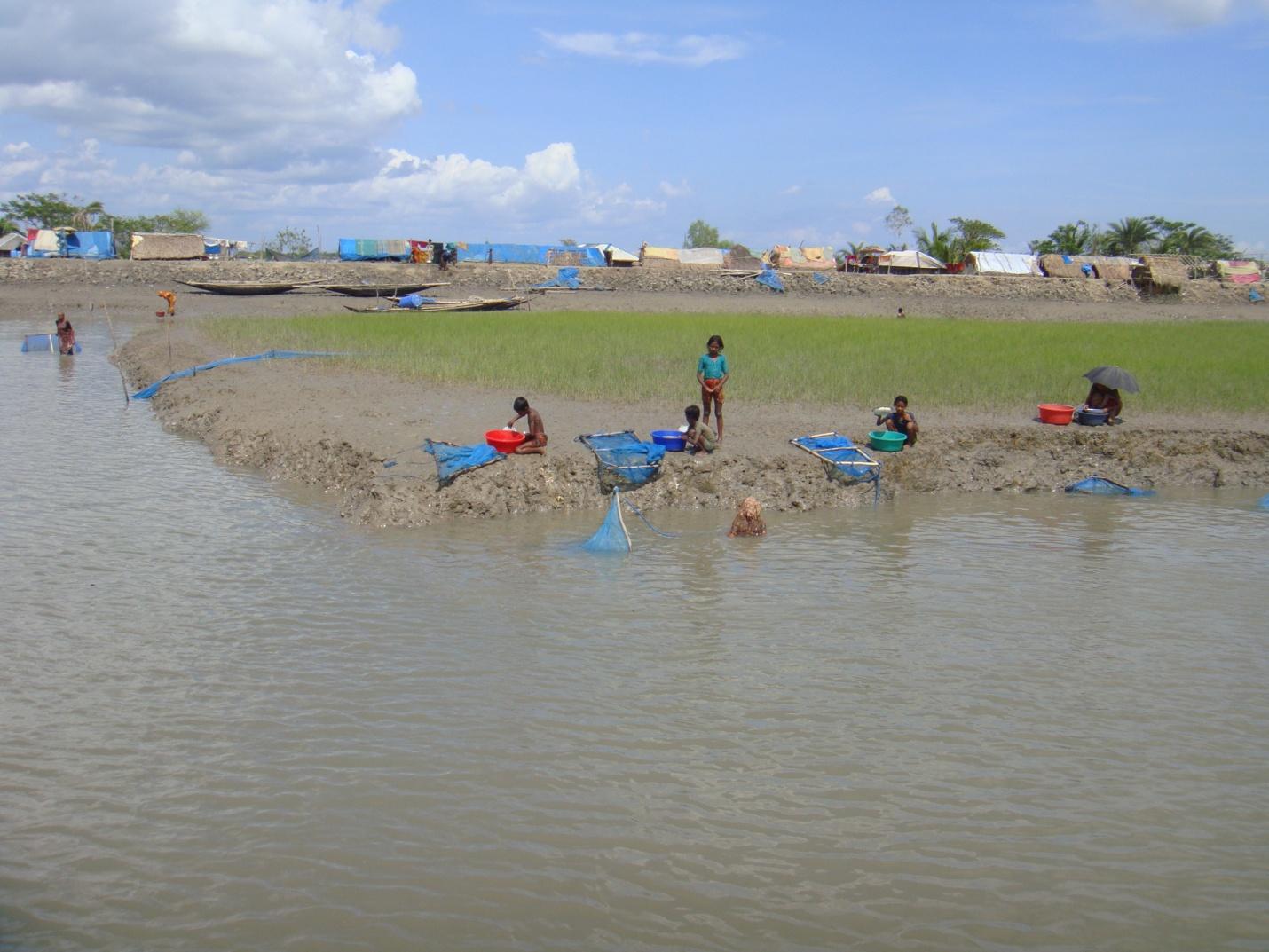by Mozifur Rahman (ELP 2013) | Research Investigator, Center for Population, Urbanization and Climate Change, Bangladesh
Ganges- Brahmaputra -Meghna (GBM) Delta, is a vulnerability hotspot. Both human and natural processes contribute to the vulnerability of the socio-ecological systems of this river delta. It has been projected that approximately 50 million people from this delta area will be displaced by the end of this century. This floodplain frequently suffers from devastating floods caused mainly by storms and tropical cyclones. Sea level rise, salinity intrusion, land subsidence, and water logging are threatening the lives and livelihoods of millions of people living in this fragile low-lying area. In the past three years, our team has specially looked at the process of salinization and its impact on human health, agricultural production, and wellbeing. Preliminary analysis of our research has revealed that the south-west and south-central coastal populations have a significantly higher prevalence of hypertension, potentially due to high salinity in the groundwater. Evidence of higher intake of table salt by coastal populations was also found in our study areas, which may cause other adverse health effects - from eclampsia in pregnancy, to increased cardio-vascular diseases and strokes. Our future research agenda will seek potential solutions to salinization through adaptation & socio-ecological resilience. I will be very happy to discuss with ELP alumni and the Berkeley research community about possible collaborative research on coastal ecosystem service assessment, sea level rise, adaptation to salinization and other topics relevant to deltaic ecosystems.

